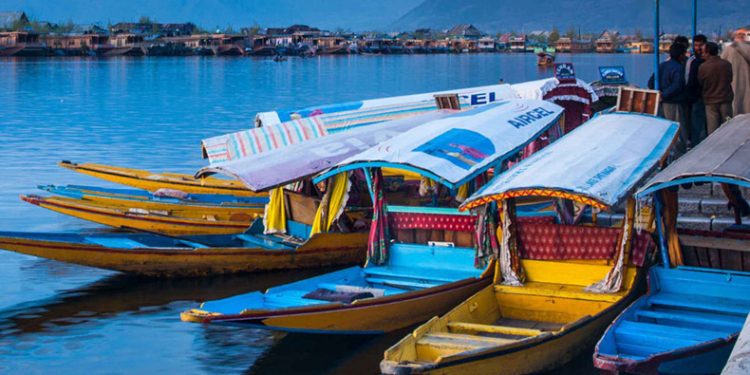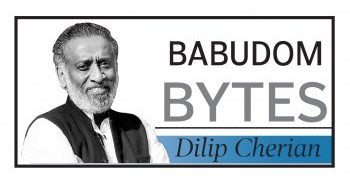Santosh Kumar Mohapatra
BJP leaders, especially Home Minister Amit Shah and Prime Minister Narendra Modi, offer many justifications for the incumbent government’s decision to scrap Article 370. They argue that the said Article impeded industrialisation, development of tourism, flow of investment and overall development of Jammu and Kashmir. People of the state remain poor in perpetuity despite the abundance of economic opportunity for the local populace. However, economic indicators show that J&K is not underdeveloped.
Let us take the most useful indicator in this context — poverty ratio. In 2011-12 (last available poverty data in India), J&K’s poverty ratio was 10.35 per cent, compared with the all-India average of 21.92 per cent. Among 28 states, about 21 states had higher poverty ratio than J&K, Gujarat (16.63 per cent), Odisha (32.59 per cent), Uttar Pradesh (29.5 per cent) and Bihar (33.74 per cent) among them.
In May 2013, then Finance Minister P Chidambaram had set up a committee under then chief economic adviser Raghuram Rajan to suggest ways to identify indicators of the relative backwardness of states. While ten states were classified as “least developed or backward”, 11 were found “less developed” and seven states were considered “relatively developed or most developed”. J&K, at rank 14, was among less developed states. It means 13 other states were behind J&K, and states such as Odisha and Bihar ranked among the most backward.
The Human Development Index (HDI) is a composite index of life expectancy, education and per capita income indicators. In 2017, out of 36 states and Union Territories, J&K was ranked 17th with HDI value of 0.684, higher than national average of 0.640 and 16 states and Union Territories, including Gujarat at 24th place, with HDI value of 0.667. Odisha ranked 32 was among the poorest states and was far behind J&K.
J&K has an unemployment rate of 5.3 per cent, which is far below the national average of 6.1 per cent. Only 9 states have lower rate of unemployment than J&K. While unemployment rate of Gujarat is 4.8 per cent, Kerala has 11.2 per cent unemployment and Odisha 7.1 per cent
Per capita GDP, or GSDP in case of states, is an important indicator of prosperity and development. In 2018-19, among the 33 Indian states and Union Territories, J&K with a per capita income of Rs 94,992 (24th rank) was behind the national average of Rs 1,26,406, but still ahead of nine states and Union Territories, including Bihar (ranked 33), Uttar Pradesh (ranked 32) and Odisha (ranked 28).
The second edition of NITI Aayog’s Health Index (2015-2016 as base year and 2017-2018 as reference year) is based on 23 health-related indicators. Jammu and Kashmir is well placed at 7th rank, ahead of 14 large states. Uttar Pradesh retained the worst performer tag at rank 21, followed by Bihar ranked 20, Odisha ranked 19 and Madhya Pradesh ranked 18. Reduction of Infant Mortality Ratio (number of deaths per 1,000 live births of children under one year of age) is generally accepted as a proxy for a broad set of human development outcomes. According to National Family Health Survey (NFHS) militancy-plagued J&K is ranked first in reducing infant mortality. According to NITI Aayog’s report, J&K’s infant mortality ratio (IMR) was 24 in 2016 (the same as Karnataka and Tripura) lower than the national average of 34. Out of 36 states and Union Territories, 18 have higher mortality rate than J&K. Gujarat with IMR (30 per 1,000 live births) is ranked 17th and behind J&K. Madhya Pradesh with the highest IMR of 47 per 1,000 is followed by Assam at 44, Uttar Pradesh at 43, Bihar at 38.
Another important indicator of well-being of people is the number of people served by a government doctor. The WHO-prescribed ratio is one doctor per thousand. In India, each doctor serves 11,082 patients. But the situation of J&K was far better at 1:3,060 in 2018. Of the 36 states and Union Territories, only six small states had fewer people served by one doctor. It means 30 states and Union Territories, including Gujarat (1:11,475), have worse ratio than J&K. The worst state is Bihar at 1:28,391 followed by Uttar Pradesh (1:19,962), Jharkhand (1:18,518), Madhya Pradesh (1:17,192), Maharashtra (1:16,696), Chhattisgarh (1:15,916), Odisha (1:12,744).
Lower level of unemployment is also an indicator of development. Unemployment rate of states is compiled from the Report on Periodic Labour Force Survey (2017–18) released by Ministry of Statistics and Programme Implementation, Government of India. J&K has an unemployment rate of 5.3 per cent, which is far below the national average of 6.1 per cent. Only 9 states have lower rate of unemployment than J&K. While unemployment rate of Gujarat is 4.8 per cent, Kerala has 11.2 per cent unemployment and Odisha 7.1 per cent.
Another important indicator is life expectancy. Jammu and Kashmir is ranked third among 21 States in terms of life expectancy according to Sample Registration Survey (SRS) based on life table 2010-14 and HDI report (2011) of UNDP. It means that out of 21 states, life expectancy of J&K is higher than 18 states.
The analysis of these indicators prove that J&K is not underdeveloped or poor in perpetuity as is being publicised; rather, on many indicators, it outscores many other states, including Prime Minister Modi’s own state Gujarat, Yogi Adityanath’s Uttar Pradesh, Nitish Kumar’s Bihar and Naveen Patnaik’s Odisha. Hence there is no economic rationale behind Scrapping Article 370. The action may be backed by a surreptitious design to invite Indian and multinational big businesses to come and plunder the natural wealth of J&K and to make super profits there.
The writer is an Odisha-based economist. e-Mail: skmohapatra67@gmail.com.






































